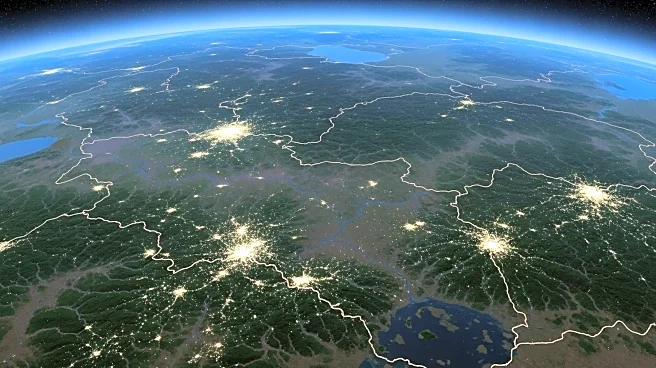What's Happening?
A study has utilized geospatial big data and machine learning to refine the mapping of ethnic minority populations in Dehong Prefecture, Yunnan Province, China. By integrating nighttime light data with multisource data, researchers have been able to identify spatial distribution patterns for different ethnic groups. The study highlights significant changes in population density from 2010 to 2020, with a general decrease in population across most areas, but notable increases in small-scale regions. The research focuses on the spatial decomposition of populations based on ethnic groups, revealing trends in population clustering and migration towards economically developed areas. The study also employs a random forest model to predict population distribution, achieving high accuracy with R² values exceeding 0.80.
Why It's Important?
This research provides valuable insights into the dynamics of ethnic minority populations, which can inform policy decisions and development strategies in multi-ethnic regions. Understanding population distribution and migration patterns is crucial for addressing cultural, economic, and social development challenges. The study's findings can aid in the preservation of ethnic cultures and inform infrastructure and resource allocation. Additionally, the use of advanced data fusion techniques demonstrates the potential for geospatial big data to enhance demographic research and planning. By identifying areas of population growth and decline, policymakers can better target interventions to support sustainable development and cultural preservation.
What's Next?
The study's methodology and findings could be applied to other regions with diverse ethnic populations, providing a framework for similar analyses. Future research may focus on refining the models to incorporate additional variables and improve predictive accuracy. Policymakers and planners can use these insights to develop targeted strategies for economic development, cultural preservation, and infrastructure investment. As geospatial data and machine learning technologies continue to advance, their application in demographic research is likely to expand, offering new opportunities for understanding and addressing complex social and economic issues.
Beyond the Headlines
The integration of geospatial data and machine learning in demographic research raises important considerations regarding data privacy and ethical use. Ensuring that sensitive population data is handled responsibly and securely is crucial to maintaining public trust. Additionally, the study highlights the potential for technology to bridge gaps in traditional demographic research, offering more nuanced and accurate insights into population dynamics. As these technologies become more prevalent, researchers and policymakers must navigate the balance between innovation and ethical responsibility, ensuring that data-driven insights are used to promote equitable and sustainable development.










